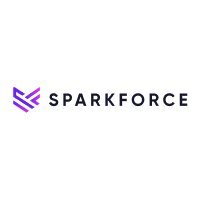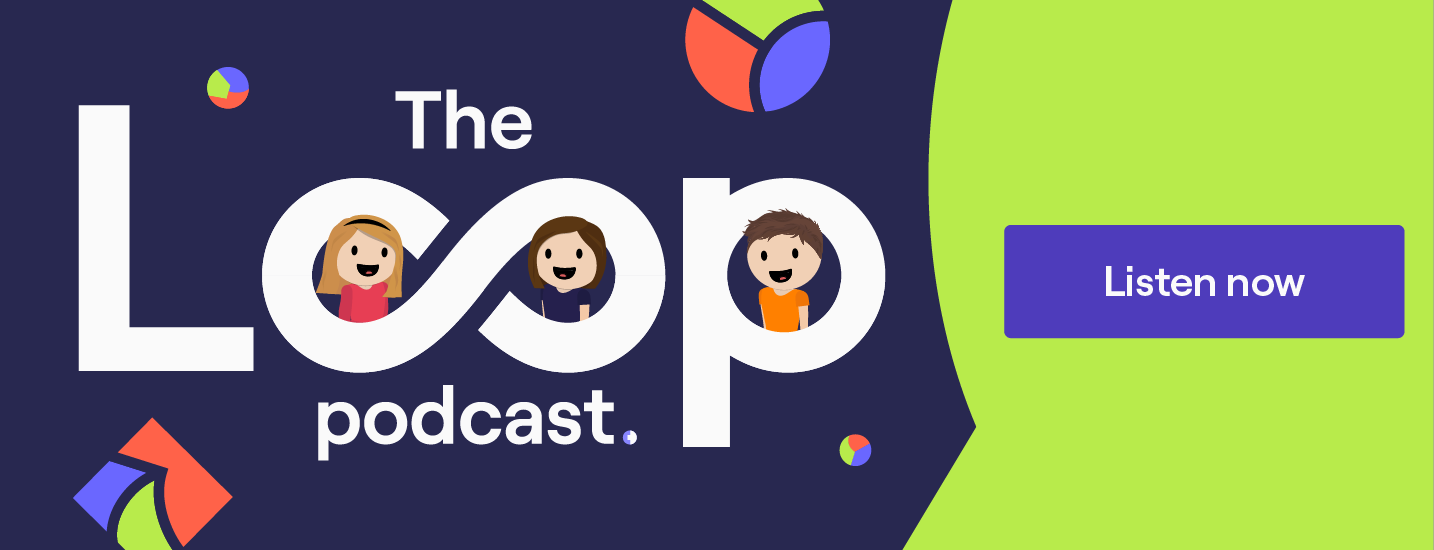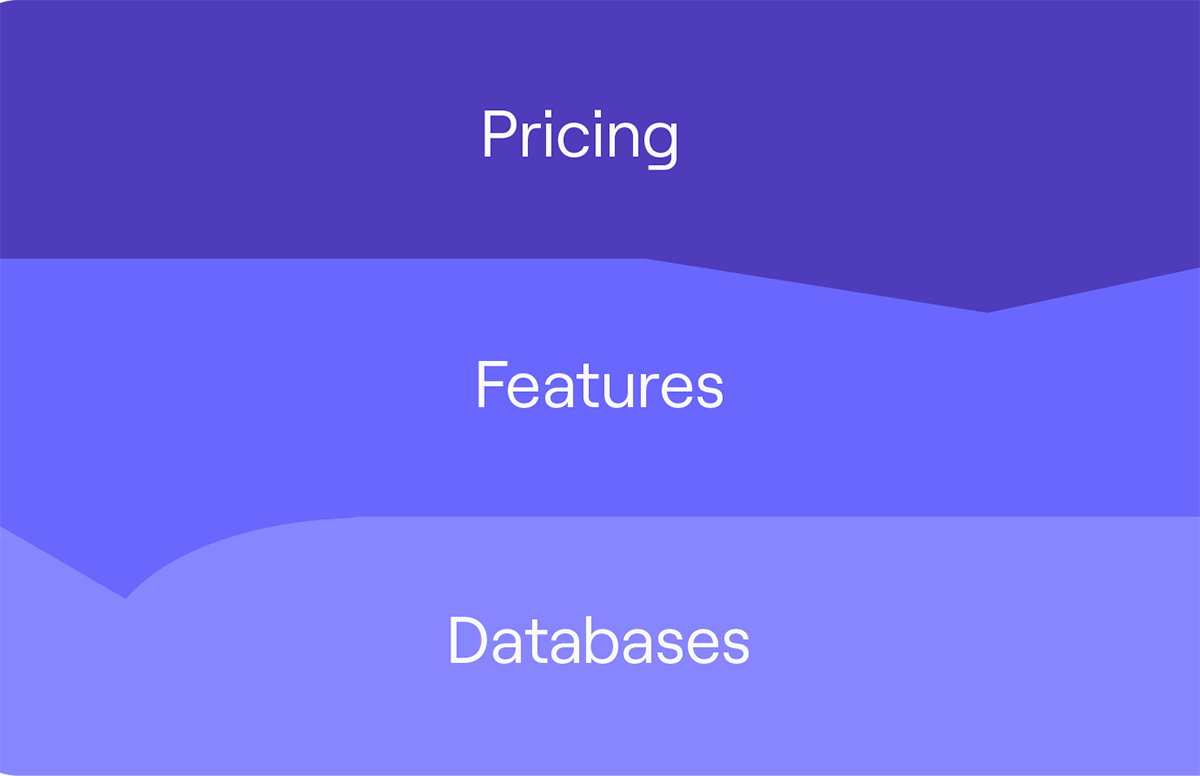12 Proven B2B Marketing Strategies for Mid-market Growth (2025)
The best B2B marketing strategies:
B2B marketing strategies often feel disconnected from real results.
Many mid-market teams’ work keeps growing, but the impact remains unclear. Channels are crowded, and buyer journeys are fragmented, making it hard to prove what’s working and why.
This guide offers 12 practical strategies for B2B marketing that our team uses to focus efforts, improve quality, and support pipeline.
No generic advice. Only B2B marketing strategies and tactics we’ve tested and refined ourselves.👇
1. Scalable account-based marketing for mid-market growth
For mid-market teams, scalable Account-based marketing (ABM) is essential. It allows marketers to focus on high-value accounts most likely to convert.
Most teams want to use ABM but struggle to scale it. The risks are doing too much manual work for too few results or going broad and losing relevance.
We were in that position at Cognism. ABM was new for us, and we didn’t have a clear process early on. Sales handed us a list of accounts, and marketing was expected to act on it.
But it lacked structure. It was too reactive.
So we rebuilt our ABM strategy. We ran a revenue analysis to see where we win most often — which industries, segments, and deal sizes. We used that to define our ICP and build a cleaner, more focused target account list.
Then we flipped the process: marketing owns the list creation, and sales validates it.
Once we’ve identified priority accounts, we build account plans based on real activity. These are the questions we start with:
- Have we spoken with the account before?
- If they were previously closed-lost, then why?
- What does current activity look like on the company level? What web pages are being visited?
- Can we use Qualified to identify user activity and tailor content per persona? (e.g. a UK Sales Director has visited a blueprint on commission plans)
- What ads are being engaged with?
- What personas are most active?
This input shapes the overall B2B content marketing strategy. Our demand gen managers work directly with content to decide whether the campaign needs bespoke messaging. If a specific persona is engaging, we tailor for them.
Then we choose the format and channel mix. Depending on the account, we might:
- Ask a subject matter expert to connect on LinkedIn.
- Use Mutiny for personalised landing pages.
- Offer 1:1 training or a walkthrough.
- Send a Reachdesk gift.
- Build a custom email sequence.
- Launch paid or display ads with specific role-based messaging.
No two campaigns look the same. The plays depend entirely on account behaviour, the personas involved, and how fast we need to move.
2. Apply agile marketing practices for faster iteration
Speed matters when you’re a mid-market team implementing a B2B digital marketing strategy.
You don’t have the headcount or budget of an enterprise org, but you still need to hit ambitious goals and move faster than most startups.
That’s why we introduced agile marketing at Cognism.
We strongly advocate for the “done is better than perfect” mindset. We believe that our competitive advantage is moving quickly, testing ideas, and learning from real-world feedback. Agile marketing like this allows teams to adapt quickly based on performance data.
Here is what Alice de Courcy, Group Chief Marketing Officer at Cognism, says about this in her book “Diary of a first-time CMO”:
“I firmly believe that our competitive advantage at Cognism has been the ability to move quickly and be one of the first in our industry to make bold moves.” “I consider myself an action-based CMO and believe an idea is only as good as its execution. I live and breathe this philosophy every day, and it’s instilled within my team.”
We run bi-weekly sprints using Asana as our project management tool. Each team has a board where projects are tracked with clear ownership, milestones, and marketing KPIs.
Every sprint is focused on delivering specific outcomes. It might be a campaign launch, a landing page test, a new piece of content, or an experiment. The team commits to what can realistically be completed within that sprint.
This structure gives us a steady rhythm for planning, execution, and review and helps us stay aligned. Sprints create a regular moment for B2B marketing leaders to assess whether the team is focused on the right work and whether current priorities reflect business goals.
At the end of each sprint, we evaluate the results of our B2B digital marketing strategies. We review performance metrics, sales input, and customer or prospect conversation insights. If something isn’t delivered, we adjust it in the next sprint.
Sprints are especially useful in the early stages of building an agile marketing strategy or motion. That’s when there are more unknowns than certainties, and you’re under pressure to move quickly without perfect information.
Moreover, it helps your team stay aligned with revenue goals while reducing wasted budget on underperforming tactics.
3. Shift from broad SEO tactics to intent-based optimisation
☑️ Map keywords to specific pain points, buying journey stages, and decision-making unit roles to improve relevance and conversion.
You don’t need thousands of top-of-funnel visitors in a content marketing strategy for B2B. You need the right people landing on the right pages with the intent to solve a real problem. That’s where real revenue growth happens.
Mid-market buyers are solution-aware and time-poor. Rather than chasing broad, high-volume keywords, focus on search intent.
We moved away from chasing search volume and started focusing on buying intent. That meant rewriting our content strategy around the keywords and topics people search for when they’re closer to a decision.
Many B2B SaaS marketing strategies fall into the trap of targeting high-volume keywords just because they align with the product category. But that rarely drives customer acquisition. The volume looks good in a report, but the traffic doesn’t convert.
We’re in a well-established category, so we don’t need to focus on top-level educational content like “What is lead generation?” People already know what it is. What they’re searching for now are specific solutions to specific problems. That’s where we focus.
So, we prioritise terms that would bring more in-market people to the site and create content that converts. We call it the money keyword strategy.
Alice said:
“It’s better to spend more time and money driving the right, high-intent people to your website versus driving as much traffic as possible and having a low percentage of people take any action. This is where honing in on that 5% of in-market traffic makes sense.”
Create bottom-of-funnel content that speaks directly to your ICP’s challenges. Map keywords to specific pain points, buying journey stages, and decision-making unit roles to improve relevance and conversion.
For in-market buyers, our goal is to capture demand and convert it. We split this into three content categories:
- Paid search and affiliate landing pages.
- High-intent website pages, like pricing and demo requests.
- SEO pages focused on product use cases and comparison searches.
This content is built for people who are already problem-aware and looking for solutions. They’ve done the research. Now, they want clear, direct information that helps them make a decision. So we send them straight to the pages that do that job — pricing, product, and demo requests.
This B2B SaaS marketing strategy works because the buyer journey isn’t linear. It’s long, messy, and unpredictable. People jump in and out, compare tools, read reviews, and often go quiet before reappearing months later.
You can no longer rely on B2B marketing strategy frameworks with clean funnel stages. The real “funnel” looks more like this:
/SaaS%20Marketing%20Funnel/POV2%20Stop%20building%20fantasy%20funnels.webp?width=720&height=600&name=POV2%20Stop%20building%20fantasy%20funnels.webp)
This shift helped us focus resources where they drive revenue. We no longer spend time or budget on broad awareness B2B content marketing strategies that don’t convert.
Instead, we generate demand through our media machine and capture it through high-intent, money keyword pages. Importantly, this also brings down our overall acquisition cost.
4. B2B data for better targeting
Innovative B2B marketing strategies start with strong marketing data. Relying on outdated or limited sources will waste time, budget, and ad impressions.
Most people know Cognism for its sales use case, but we use it daily to support our marketing. It gives us cleaner data, better-targeting options, and more control over who sees what and when.
Here’s how we use Cognism in our SaaS B2B marketing strategy:
ABM list building (1:1 and 1:many)
For 1:1 ABM, we use Cognism to build contact lists of decision-makers we want to target with personalised campaigns.
We can upload those lists directly into LinkedIn for precise ad targeting and share them with sales to align on accounts and personas.
For 1:many, we focus more on account-level targeting. Cognism helps us create strategic account lists based on filters like region, company size, department structure, and ICP fit. This gives us access to audience segments we couldn’t reach natively in ad platforms.
Because we can enrich contact data with phone numbers, emails, and LinkedIn URLs, our match rate on LinkedIn is over 90%! This accuracy is essential for LinkedIn B2B marketing strategies that rely on precise targeting. It translates directly into better campaign performance.
/B2B%20Marketing%20Strategies/ABM-success-Cognism.webp?width=731&height=500&name=ABM-success-Cognism.webp)
Job triggers and company events
We also use Cognism to surface timely changes at target accounts. For example, job join triggers let us find new decision-makers who’ve just started in a role, which is a prime time to engage.
We can also identify companies that recently raised funding or made an acquisition and layer that into our campaign criteria. These signals make our outreach more relevant and better timed.
Meta ads
Most of these targeting use cases sound LinkedIn-specific, but the same contact and account lists also work on Meta.
We use them to run ABM campaigns on Facebook and Instagram to stay visible to the right people across different channels.
Better job title targeting
LinkedIn’s job title targeting has gaps, especially when you’re looking for niche roles like RevOps.
Using Cognism, we can search job titles directly and build lists with any necessary variation. This gives us access to personas that LinkedIn’s filters often miss.

Growth Lead @SparkForce

5. Use interactive and personalised content to engage buyers
Buyers engage more with content that feels relevant and tailored to their needs. Best B2B marketing strategies use formats that respond to user input and guide them toward the next step.
This includes tools like ROI calculators, quizzes, and dynamic landing pages:
ROI calculators
Work well when the product has a measurable business impact. Buyers want to understand the return. Giving them a way to estimate it based on their own data helps move them closer to a decision.
Quizzes
Help surface intent or segment users. For example, a quiz that allows someone to assess their outbound readiness gives them a clear takeaway while showing us their pain points and buying stage.
Dynamic landing pages
We use dynamic landing pages with tools like Mutiny. This tool allows us to run personalised experiences for targeted segments of users (e.g. enterprise users, returning visitors, ad campaigns or industries).
This can include updating the page content, building personalised pop-ups or side-pops, and creating banners. We can also A/B test website page designs, different messaging, layouts, CTAs, and more.
6. Stop sending one-size-fits-all email campaigns
Email marketing revenue is projected to reach $18.9 billion by 2028. This makes it one of the most effective B2B online marketing strategies. But it only works when the message is relevant. Sending the same message to everyone doesn’t achieve that.
B2B email marketing strategies usually deliver better results when you segment audiences and tailor emails based on who they are and where they are in the journey.
We usually segment by industry, persona, and funnel stage. This helps us avoid vague messaging and speak directly to each group’s concerns.
A sales leader in SaaS doesn’t need the same message as a marketing lead in manufacturing. Their priorities are different, and the content should reflect that.
We also adapt tone and content based on intent signals. Someone who just downloaded a guide might need more context. Someone who’s visited the pricing page several times likely needs a direct call to action.
Aside from cadences, cold emails, and newsletters, how else can you use email marketing to your advantage?
Many marketers swear by nurture campaigns. To nurture correctly, you must invest in an automation tool to determine when and who will receive your campaigns.
For increased success, B2B data can inform you of essential marketing triggers for your industry. So you can send out hyper-personalised emails when your prospective clients find them to be the most valuable.
Use automation software to schedule drip email campaigns. Unlike nurtures that help build long-term relationships, drip emails drive conversions. It’s essential to think about your messaging for each type of campaign and what action you want your buyer to take.
At Cognism, we like to incorporate a bit of humour into our campaigns. Here’s an example of one of our most successful retargeting nurtures:
/B2B%20Marketing%20Strategies/example%20of%20a%20cognism%20email%20using%20humour.webp?width=587&height=500&name=example%20of%20a%20cognism%20email%20using%20humour.webp)
And if you’re worried that being witty won’t be enough to get noticed, then it might be time to consider plain text alternatives for all your email campaigns.
While this strategy sounds crazy, here’s why it works:
They’re compatible with every device, including smartwatches.
Think about this:
Your prospect just took a break to hit the gym. When a notification comes through on their watch, they’re more likely to check what it is than stop and look at their phone. And, because your email is plain text, it’s more likely to be seen and read than one that can’t be displayed.
Another one of the most effective B2B marketing strategies is incorporating a Vidyard video into your emails. This will increase clickthrough rates, and your prospects will appreciate the personalisation.
💡 Our top email marketing strategy tip: read our guide!
It’s not enough to create and send a single email. You want to incorporate exceptional content with best practices proven to get results.
Discover all the tips you need in our guide to email marketing.
7. Optimise content performance with AI tools
For mid-market teams with limited bandwidth, AI can be a force multiplier.
The Cognism team use AI to improve our B2B marketing plan, writing, and optimisation. It doesn’t replace strategy or creative thinking, but helps speed up execution and reduce guesswork.
As part of our B2B marketing automation strategy, we rely on AI tools to analyse search intent and identify content gaps more efficiently. Instead of manually reviewing competitor content or scanning search trends, we use AI to surface patterns, highlight what’s ranking, and flag missed opportunities.
Claude often outperforms other tools like ChatGPT, Google Gemini, and Perplexity for keyword research.
You can use Claude to generate initial keyword ideas and then run the best ones through Ahrefs Keyword Explorer. Based on Ahrefs data, you can select the strongest opportunities to prioritise for the next quarter.
AI also helps with content development. It supports editing by tightening intros, removing unnecessary repetition, and improving sentence structure. This is especially useful in long-form content, where clarity can drop as the piece progresses.
For performance tracking, AI can help you review the impact of content on a scale. Monitor which assets are driving engagement or influencing the marketing pipeline and which aren’t. This allows you to update what isn’t working and double down on what is.
We’ve also started looking at how AI can improve our operations. Not just the content itself but also the workflows behind it. Alice said:
“I’ve implemented an OKR for every team, challenging them to find one repeatable workflow that can be improved using AI. We’re in Cognism’s scaling phase, and I know that the board will soon expect me to show how I’ve made my department more efficient by leveraging AI in the right areas and ways.”
“I’m trying to move the team from one-off, random AI use cases to a predictable process that we can scale. People are wary of AI, but AI-powered tools could be the answer to unlocking extra capacity and output, which I can’t be mad about.”
8. Replace generic lead magnets with niche resources
Generic lead magnets might generate leads, but they rarely generate pipeline. That’s why they are inefficient for most B2B growth marketing strategies. At Cognism, we learned this the hard way.
In the early days, ebooks worked. They were detailed, actionable, and created by subject matter experts. We could generate MQLs at around $10 each.
However, as the company scaled, this model hit its limits. The volume was there, but the intent was missing. Sales teams grew frustrated with leads that didn’t convert, and buyers got tired of giving up their details for content they barely remembered downloading.
That shift in buyer behaviour led us to rethink our understanding of a modern marketing strategy for B2B.
We moved away from broad, gated assets and started building niche resources that solve specific problems for specific people.
These include:
- ROI calculators tailored to a department or job role.
- Case studies that reflect the buyer’s industry and company size.
- Templates designed for sales leaders.
- Frameworks that help marketers segment or assess intent.
The goal is to give buyers something immediately useful. Instead of long, generic PDFs, we focus on quick, practical resources that help solve real problems. We also make them easy to access, with no forms and no friction.
Alice said:
“If I were starting over today, I would start with this approach. I wouldn’t go back to the lead gen model. That’s because I believe the way people want to buy and engage with B2B brands has changed, and so the MQL playbook is unlikely to be effective for much longer.”
9. Create content for multiple channels and devices
B2B buyers consume information across different formats, platforms, and devices. Critical touchpoints are lost if you don’t build your B2B SaaS content marketing strategy with this in mind.
One surefire way to achieve B2B success in the coming year is to create different types of content across your lead source channels.
You can turn a single long-form article into a LinkedIn carousel, a newsletter excerpt, a short video, or a podcast topic. One idea can generate many assets, each shaped to fit the platform it appears on.
Alice said:
“I can’t recommend repurposing content enough. But not just any content. Use the data you have access to. Look at your top-performing blogs and repurpose those into a relevant content format, such as a carousel. Look at your comments — what are the most common things people ask questions about? Use that to build your posts around. And don’t forget, once your posts are live, use the data at your fingertips to learn more about what people respond to.”
Repurposing extends the reach of each idea. It allows you to stay consistent without starting from scratch.
However, there’s no more copying and pasting when it comes to content creation. Buyers want dynamic content that offers actionable guidelines. Each piece needs to fit the expectations of the platform on which it is published. Copying content from one channel to another rarely works.
Instead, adapt the message so it matches how people interact with it:
- LinkedIn. We keep it focused on one insight, use clear formatting, and add visuals to stop the scroll.
- Email. We write short subject lines and get to the point fast.
- Blog posts. We answer the search query quickly, use headings for easy scanning, and include a logical next step.
- Short video content. We highlight one idea per clip and keep it under 90 seconds to match user attention spans.
- Podcasts. We pull a narrative or problem-solution angle from the original content and structure it as a conversation.
Social channels aren’t the only means of getting targeted content in front of potential buyers. You can also use your B2B website to create personalised experiences.
Platforms like Drift allow you to create specific user experiences based on the web pages they visit. Think of it as a choose-your-own-adventure but automated for B2B prospects!
Each prospect will have a different experience depending on their location, how they found your site, and how they interact with it.
10. Adapt your marketing strategy for a new generation of B2B buyers
Millennials and Gen Z now make up most of the B2B buying committee. 71% of B2B buyers are under 45 (Forrester), which is growing.
This generation doesn’t want to be sold to. They want to be understood.
That’s why tone, simplicity, and relevance matter more than ever.
Forrester found that younger buyers are more demanding, with 90% citing dissatisfaction with their vendor in at least one area, compared to 71% of older buyers.
Over a third of Millennial and Gen Z buyers are expected to purchase through self-guided digital channels in the next two years, including vendor websites, marketplaces, app stores, or directly within products.
This shift affects all the best marketing strategies for B2B. Young buyers expect digital-first experiences. They research independently, avoid forms, ignore generic outreach, and prefer to learn about products the same way they consume other content.
To meet them there, you’ll need to adapt how you write, design, and distribute content:
- Tone and messaging. Focus on clarity and honesty: no inflated claims or over-engineered copy, just direct answers to real questions.
- Format. Use short-form videos, LinkedIn carousels, and visual posts that deliver value fast. Attention is short. Scroll behaviour is real.
- Proof over promises. Lead with real outcomes. Screenshots, testimonials, and use cases build trust faster than feature lists.
- Transparency. Pricing is easy to find. Free trials and live demos are clearly promoted. Buyers prefer self-service and speed over sales calls.
- Speed to insight. Summarise key takeaways first, then let the reader go deeper if they want to. Control matters.
You can also consider B2B marketing strategies that encourage them to move down the B2B marketing funnel, such as:
- Mobile compatibility.
- Expanding across new social media channels like TikTok.
- Easy and fast communication that doesn’t involve phone calls.
- Supporting a cause, such as donating a percentage of profits to stop global warming.
11. Embrace dark social to capture hidden influence in the buyer journey
☑️ Monitor indirect traffic and branded search as performance signals.
One unique marketing strategy is to build a community on social media. This increases sharing across dark social media, encourages referrals, and gives you a deeper understanding of the content your buyers want.
However, not all buying signals show up in your CRM. Much of today’s B2B decision-making happens privately: forwarded emails, Slack threads, LinkedIn DMs, WhatsApp groups, internal Notion pages.
This is dark social: the parts of the buyer journey you can’t track with traditional attribution. It’s growing fast, and effective B2B marketing strategies must account for it.
This layer drives much of Cognism’s brand momentum and demand. People share Cognism content in private groups, recommend it to peers, and pass along resources behind the scenes. This is why we’ve developed several marketing strategies for building communities across channels.
Our first step was to hire a subject matter expert or influencer as our brand ambassador. With his help, we created podcasts, videos, blogs, and more.
Influencer marketing isn’t the only great marketing strategy for B2B. Creating clever campaigns that get shared and encourage conversations is also a fantastic way to get your brand seen by your community.
We made a bunch of “lead gen leavers’ shirts for our LinkedIn followers to claim for free. All they had to do was share a pic wearing the shirt. This tactic helped spread brand awareness, was memorable and humorous, and encouraged referrals.
/B2B%20Marketing%20Strategies/unnamed%20(2).webp?width=496&height=819&name=unnamed%20(2).webp)
Plus, offering free gifts certainly gets people talking 😉
Dark social also changes how we listen. The team watches for signals that don’t appear in dashboards, like a prospect saying they heard about Cognism in a Slack group, or sales seeing a screenshot from an internal chat.
To track impact, we look at patterns like:
- Spikes in direct traffic.
- Growth in branded search.
- Mentions in sales conversations.
- High social engagement even with no clicks.
Alice says:
“There’s been an obvious wave of dark social murmurings around Cognism. We can see it in the numbers, but we also feel it. LinkedIn posts talking about the content we produce, experts in the field reviewing and praising our content strategy, and lots of people sharing how they’ve experienced value from Cognism content.”
If you want to learn more about demand generation as a B2B marketing strategy, read our CMO’s book - Diary of a First-time CMO. It’s available online (ungated)👇
12. Choose the right tech stack
The right tech can get you everywhere.
Whether it’s marketing automation tools, CRMs, AI, or analytics software, investing in tech is one of the most effective B2B marketing strategies you can implement.
Consider combining automation and artificial intelligence to assist your marketing team in creating optimised campaigns.
Here’s a quick rundown of how tech can fuel your B2B marketing strategies and tactics:
- Automation helps speed up manual processes like creating, managing, and measuring campaigns across marketing channels.
- Customer relationship management (CRM) systems help store your contact database and track and organise opportunities. This information can be accessed across organisations, which helps to align sales and marketing and strengthen ABM campaigns.
- There’s no need to enter nefarious paths to buy leads if you invest in a good sales intelligence tool. Moreover, this software can help refresh existing data, set trigger alerts, and target leads interested in buying with intent data.
- Many teams supplement their marketing tactics with artificial intelligence. AI can suggest changes, write copy, chat with leads, and more. This speeds up the marketing process and helps ensure all campaigns perform at their best.
At Cognim, we don’t believe in adding tools to follow trends. Our marketing tech stack is built with intent. Every platform we choose solves a specific problem and supports how we work.
When we can’t get everything we want, we prioritise what will have the most significant impact. We chose these tools that support SaaS B2B marketing strategies:
- Qualified powers our ABM and website chat, helping us personalise journeys for high-intent visitors.
- Wynter helps us test messaging quickly with real personas.
- Dreamdata show how buyers move through the journey and helps us understand where to focus.
We regularly measure performance and expect results. For example, we saw a 739% increase in MQLs after switching to Qualified. Numbers like that show the value of getting the tech stack right.
/B2B%20Marketing%20Strategies/image99.webp?width=588&height=450&name=image99.webp)
We also involve the team in decisions. Each function uses different tools, so they help choose what fits best. Some of the tools we rely on now include:
- Gong for sales insights.
- HubSpot for website management.
- Mutiny for web personalisation.
- Hotjar for user behaviour analytics.
- Ahrefs for SEO.
- Cognism for sourcing high-quality B2B contact data for campaigns.
FAQ
What are B2B marketing strategies?
B2B marketing strategies are tactics businesses use to generate more demand for their products or services from other businesses. They have a lot in common with B2C in that they use many different types of marketing to get their message in front of buyers.
Online content marketing is a favourite strategy as it allows B2B marketers to connect with prospective buyers where they spend most of their time. On LinkedIn or Facebook, for example.
Organic, paid, and referral marketing are some of the best B2B marketing strategies that attract business audiences today.
How do B2B and B2C marketing strategies differ?
The difference between B2B and B2C marketing strategies is that B2B businesses market products or services to decision-makers, while B2C companies market their products and services to individual buyers.
In B2B, the marketing strategy must showcase how the product or service can solve a company’s pain point while creating trust backed up with social proof. With clever copy and punchy media campaigns, B2C marketing needs to make its product or service desirable for the individual.
What are the four types of marketing strategies?
The four most popular types of B2B marketing strategies are inbound, outbound, account-based marketing, and a go-to-market strategy.
What is the most effective B2B marketing strategy for mid-market companies?
Start by aligning your strategy to your growth stage. Here are two of the most common B2B marketing strategy examples:
- If you need more pipeline, focus on intent-driven content, sales enablement, and fast follow-ups.
- If you need to build awareness, invest in a few strong content pillars and make them visible across search, social, and partner channels.
What strengthens these strategies long term?
- Build a clear message that speaks to your ICP.
- Create valuable, shareable content across the funnel.
- Make sales and marketing work from the same plan.
- Use data to spot what’s working, and repeat it.
How is mid-market B2B marketing different from enterprise or SMB marketing?
You have the speed of an SMB, but the expectations of an enterprise are different. That means you can’t afford bloated programs or long cycles. Everything needs to prove its worth.
To succeed, include this in your B2B sales and marketing strategy:
- Pick fewer channels and go deep.
- Focus on scalable plays (like repurposing one strong asset across formats).
- Invest in tools that help you move fast and measure correctly.
- Align closely with sales, you can’t afford silos.
How do you build a B2B marketing plan for a mid-market company?
When building a B2B marketing plan, start with what revenue needs to happen two quarters ahead. Talk to your sales team. Look at conversion rates. What’s missing: awareness, leads, velocity, or win rate?
Then build backwards:
- Get very specific about who you’re targeting. Not “tech companies with 50–500 employees”, but people with this title, in this industry, facing this exact problem. If you can’t name three, you’re too broad.
- Map what content supports each stage. If sales say deals stall after the demo, create a proof point asset. Test a clearer CTA or higher-intent offer if your top pages get traffic but no leads.
- Pick one channel to double down on. What has shown signs of working: organic LinkedIn, partner referrals, intent-based paid? Put 70% of your effort there. Make it measurable.
- Set targets your CFO would care about. Not MQLs, but the number of high-fit leads, demo conversion rate, or pipeline influence. Link marketing actions to the numbers that sales can feel.
- Review every 30 days. Where are leads slowing down? What marketing materials do SDRs use? What’s being ignored? Don’t wait until QBRs to fix what’s not working.
What budget should a mid-market company allocate to B2B marketing?
Top B2B marketing strategies start with 5–10% of revenue as a baseline. Then, they prioritise spending in this order:
- People who can build and execute.
- Tools that support your workflow and attribution.
- Content and creative that drives engagement.
- Paid channels with high intent (retargeting, search, high-performing LinkedIn audiences).
Avoid spending on big brand campaigns unless the basics are already working. Keep 10–15% of your budget flexible for testing and learning.
How do you measure the ROI of B2B marketing strategies?
Tie every campaign to pipeline impact. Ask yourself:
- Did this campaign create sales conversations?
- Did it shorten the sales cycle or increase win rate?
Track:
- Demo requests and self-signups from key pages.
- Contribution to open and closed pipeline.
- Branded search and direct traffic growth.
- Content referenced in sales calls.
Also track how fast leads move from first touch to opportunity. That shows if your content and messaging are doing their job.
Cognism’s B2B marketing strategy
Learn from Cognism’s marketing leaders by listening to The Loop Podcast.
Alice, Fran and Liam (Cognism’s CMO, Global Head of Demand Generation & VP of Marketing, respectively) speak to B2B marketing leaders to unpack top tactics and strategies to help you reach modern, self-serve, B2B buyers.
Click 👇 to check out our latest podcast.
/CTAs%20(SEO)/Diary%20of%20a%20CMO%20CTA%20Banner-WEBP.webp?width=672&height=257&name=Diary%20of%20a%20CMO%20CTA%20Banner-WEBP.webp)



